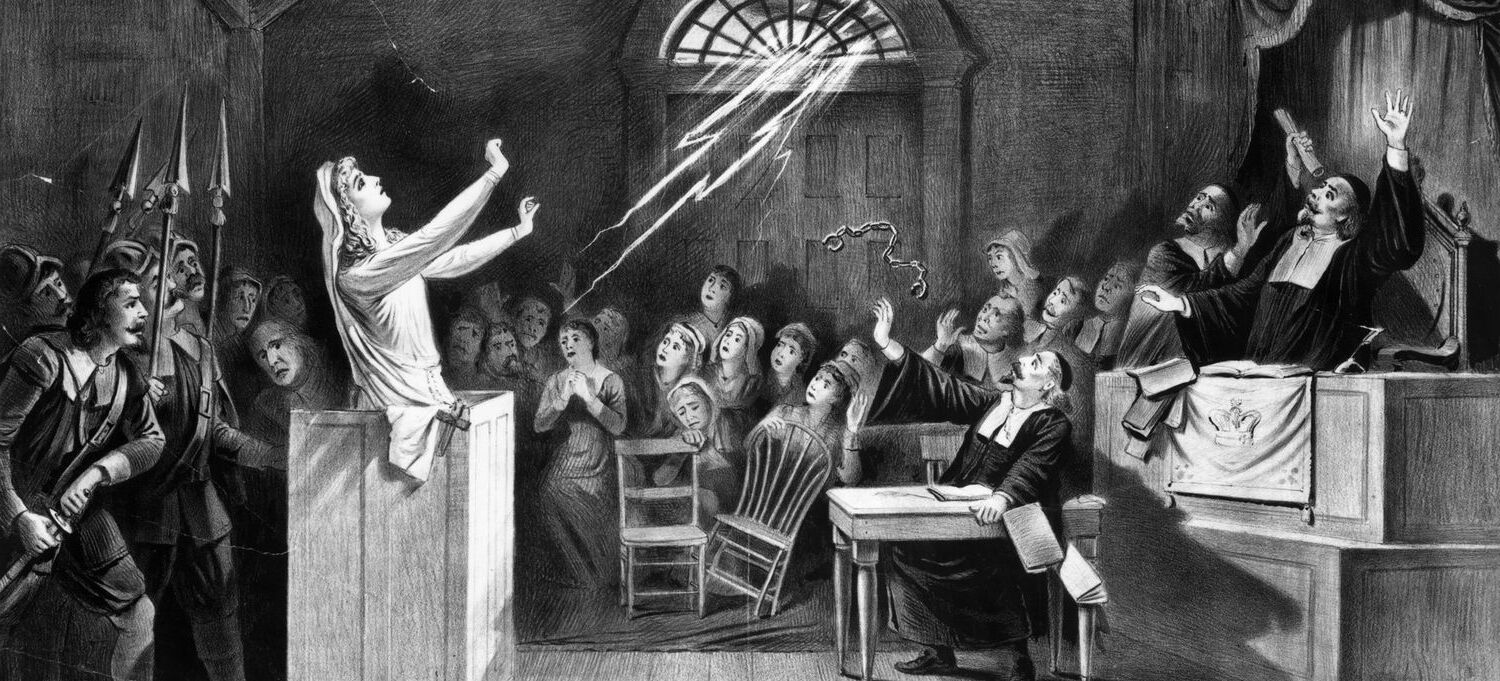
What were the Salem Witch Trials? The Salem Witch Trials were a series of hearings and prosecutions in 1692 where people in colonial Massachusetts were accused of practicing witchcraft. This dark chapter in history led to the execution of 20 individuals, mostly women, and the imprisonment of many others. The trials began after a group of young girls in Salem Village claimed to be possessed by the devil and accused several local women of witchcraft. Hysteria spread quickly, fueled by superstition, fear, and a lack of scientific understanding. These events highlight the dangers of mass hysteria and the importance of due process in the justice system.
Key Takeaways:
- The Salem Witch Trials were a dark period in American history, fueled by fear and superstition. They serve as a cautionary tale about the dangers of mass hysteria and the importance of due process.
- The trials highlight the human cost of injustice and the enduring lessons about the dangers of scapegoating, the need for legal protections against false accusations, and the importance of compassion in times of crisis.
The Origins of the Salem Witch Trials
The Salem Witch Trials were a dark chapter in American history. They took place in the late 17th century in colonial Massachusetts. Here are some intriguing facts about these infamous events.
- The trials began in 1692 in Salem Village, now known as Danvers, Massachusetts.
- The initial spark was the strange behavior of two young girls, Betty Parris and Abigail Williams.
- Reverend Samuel Parris, Betty's father, was the minister of Salem Village.
- The girls exhibited fits, contortions, and outbursts, which were believed to be caused by witchcraft.
- Tituba, a slave in the Parris household, was one of the first accused of witchcraft.
The Accusations and Trials
The accusations spread like wildfire, leading to numerous trials and executions. The hysteria gripped the community, causing widespread fear and paranoia.
- Over 200 people were accused of practicing witchcraft.
- The trials were held in a makeshift courtroom in Salem Town.
- The Court of Oyer and Terminer was established to hear the cases.
- Spectral evidence, or testimony that the spirit of the accused was seen committing witchcraft, was used in court.
- Bridget Bishop was the first person executed for witchcraft on June 10, 1692.
The People Involved
Many individuals played significant roles in the trials, from the accusers to the judges. Their actions and decisions had lasting impacts on the community.
- Judge Samuel Sewall later publicly apologized for his role in the trials.
- Cotton Mather, a prominent minister, supported the trials but later expressed regret.
- Increase Mather, Cotton's father, opposed the use of spectral evidence.
- Rebecca Nurse, a respected elderly woman, was hanged despite a petition for her release.
- Giles Corey was pressed to death with heavy stones for refusing to enter a plea.
The Aftermath and Legacy
The Salem Witch Trials left a lasting legacy on American history and culture. The events have been studied and remembered for centuries.
- The trials officially ended in May 1693 when Governor William Phips dissolved the Court of Oyer and Terminer.
- In 1702, the trials were declared unlawful by the Massachusetts General Court.
- Ann Putnam Jr., one of the main accusers, publicly apologized in 1706.
- In 1711, the colony passed a bill restoring the rights and good names of those accused.
- The Salem Witch Trials Memorial was dedicated in 1992 to honor the victims.
Cultural Impact and Modern Interpretations
The Salem Witch Trials have inspired countless books, plays, and movies. They serve as a cautionary tale about the dangers of mass hysteria and injustice.
- Arthur Miller's play "The Crucible" is a famous dramatization of the trials.
- The trials are often referenced in discussions about the Red Scare and McCarthyism.
- Numerous documentaries and TV shows have explored the events and their impact.
- Salem, Massachusetts, has become a popular tourist destination, especially around Halloween.
- The trials are a common topic in American history classes and academic research.
Unusual Facts and Lesser-Known Details
Beyond the well-known aspects, there are many unusual and lesser-known details about the Salem Witch Trials that add depth to the story.
- The afflicted girls' symptoms included barking like dogs and crawling under furniture.
- Some historians believe ergot poisoning, caused by a fungus in rye bread, may have contributed to the hysteria.
- The Puritans believed in the literal existence of the Devil and his ability to possess people.
- The term "witch hunt" originated from these events and is now used metaphorically.
- Only one person, Elizabeth Proctor, was given a temporary reprieve because she was pregnant.
The Role of Religion and Superstition
Religion and superstition played crucial roles in the Salem Witch Trials. The Puritan belief system and fear of the supernatural fueled the hysteria.
- The Puritans believed that witches made pacts with the Devil.
- Witchcraft was considered a capital crime under English law.
- The Bible, specifically Exodus 22:18, was often cited: "Thou shalt not suffer a witch to live."
- Many accused witches were midwives or healers, whose practices were misunderstood.
- The Puritans' strict religious practices and isolation contributed to the fear of witchcraft.
The Victims and Their Stories
The personal stories of the victims reveal the human cost of the trials. Many were ordinary people caught up in extraordinary circumstances.
- Sarah Good, a homeless woman, was one of the first accused and executed.
- John Proctor, a tavern owner, was hanged after defending his wife, Elizabeth.
- Martha Corey, a devout church member, was accused by her own husband.
- Mary Easty, Rebecca Nurse's sister, was executed despite a heartfelt plea for mercy.
- Samuel Wardwell, a carpenter, was hanged after confessing under duress.
The Enduring Lessons
The Salem Witch Trials offer enduring lessons about justice, fear, and the human condition. They remind us of the importance of due process and critical thinking.
- The trials highlight the dangers of scapegoating and mob mentality.
- They underscore the importance of separating church and state.
- The events demonstrate how fear can override reason and lead to tragic consequences.
- The trials are a powerful example of the need for legal protections against false accusations.
- They serve as a reminder of the importance of compassion and understanding in times of crisis.
The Lasting Impact of the Salem Witch Trials
The Salem Witch Trials left a significant mark on American history. They remind us of the dangers of mass hysteria and unjust persecution. Over 200 people were accused, 20 were executed, and countless lives were forever changed. This dark chapter teaches the importance of due process and rational thinking. It also highlights the need for tolerance and understanding in society. Today, the trials serve as a cautionary tale, urging us to question baseless accusations and stand against injustice. By remembering these events, we can strive to create a more just and compassionate world. The lessons from Salem remain relevant, reminding us to uphold fairness and humanity in all aspects of life.
Frequently Asked Questions
Was this page helpful?
Our commitment to delivering trustworthy and engaging content is at the heart of what we do. Each fact on our site is contributed by real users like you, bringing a wealth of diverse insights and information. To ensure the highest standards of accuracy and reliability, our dedicated editors meticulously review each submission. This process guarantees that the facts we share are not only fascinating but also credible. Trust in our commitment to quality and authenticity as you explore and learn with us.


